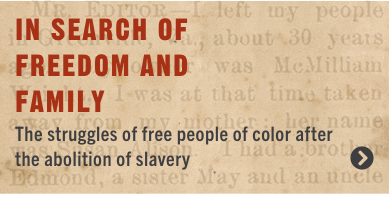Traders, brokers, auctioneers, and consigners all benefited from the buying and selling of enslaved men, women, and children, yet profits generated through the trade were not limited to those with direct ties to slave sales. Banks were heavily invested in the trade at both the local and and national levels. Slave traders across the country relied on bank loans for the initial outlay of funds needed to assemble slave coffles, and planters frequently financed purchases through bank-supported mortgages. In 1831–32 alone, loans extended to Franklin, Armfield, and Ballard's slaving firm constituted 5 percent of the total commercial credit on offer from the Second Bank of the United States.
Other industries benefited too. Insurers underwrote policies covering slave shipments by rail, river, land, and sea. Food purveyors supplied salt pork, corn, beans, and other provisions to coffle drivers and slave-pen owners. Notaries, lawyers, and other bureaucrats collected fees for each piece of paper generated by slave transfers and sales. During the early stages of ready-to-wear clothing manufacture, companies such as Brooks Brothers and S. Hopkins Jr. supplied "plantation clothing" to planters and cheaply made suits, top hats, head wraps, and dresses to auction houses eager to spruce up their human wares. Steamboat companies and ship's captains, too, saw their purses swell with funds paid to transport slave cargo. And medical providers—including doctors, hospitals, and private clinics—profited by bringing individuals sickened by their long journeys south back to full strength so that their owners might fetch high prices at their sale.
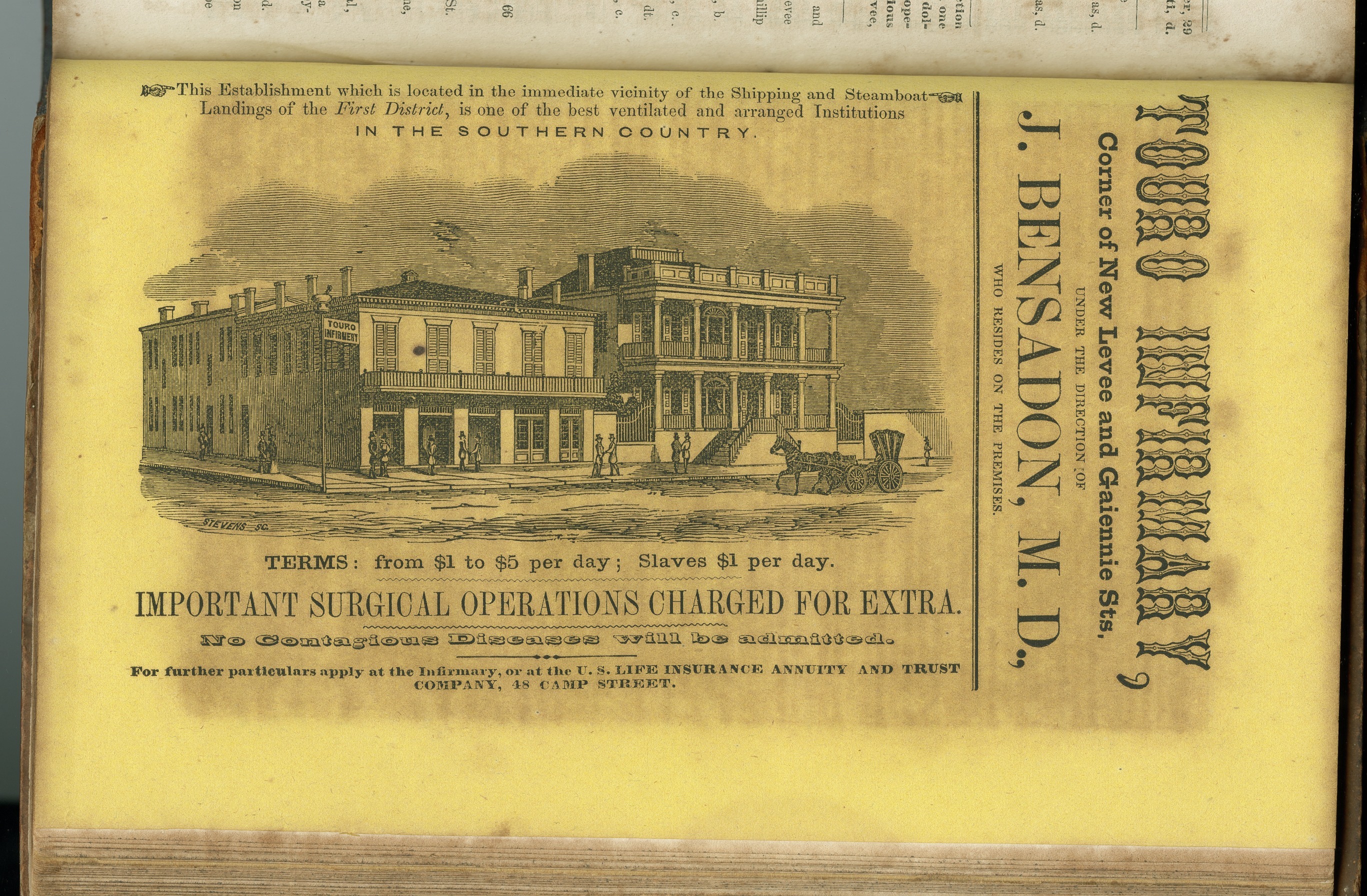
Advertisement for Touro Infirmary from Cohen's New Orleans Directory for 1853
New Orleans: Office of the Daily Delta, 1852
THNOC, gift of Mrs. William K. Christovich,
98-173-RL
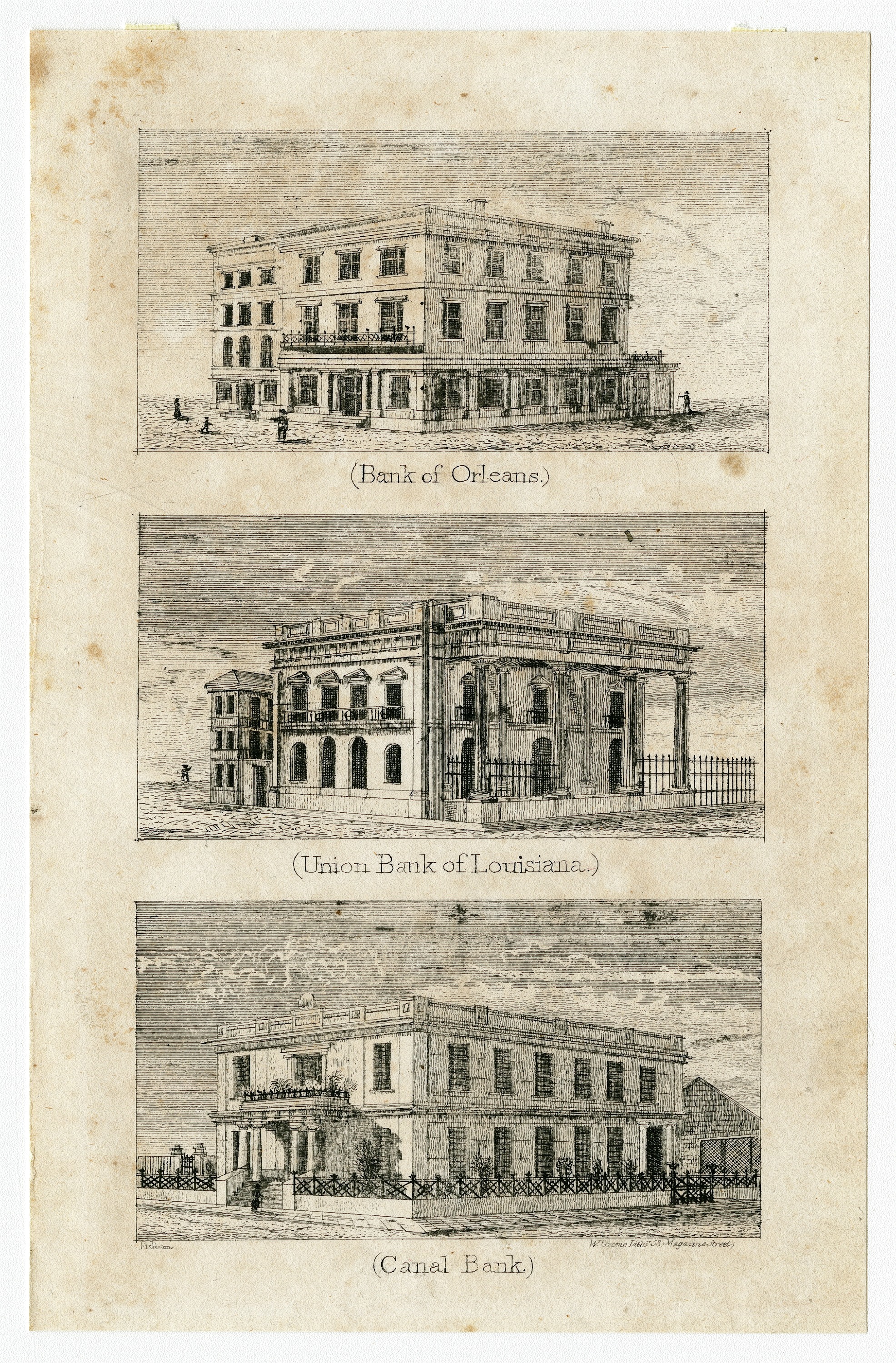
Bank of Orleans, Union Bank of Louisiana, and Canal Bank
between 1833 and 1838
lithograph by Robert W. Fishbourne, draftsman
THNOC, gift of Mr. and Mrs. Albert Lieutaud, 1957.73.3
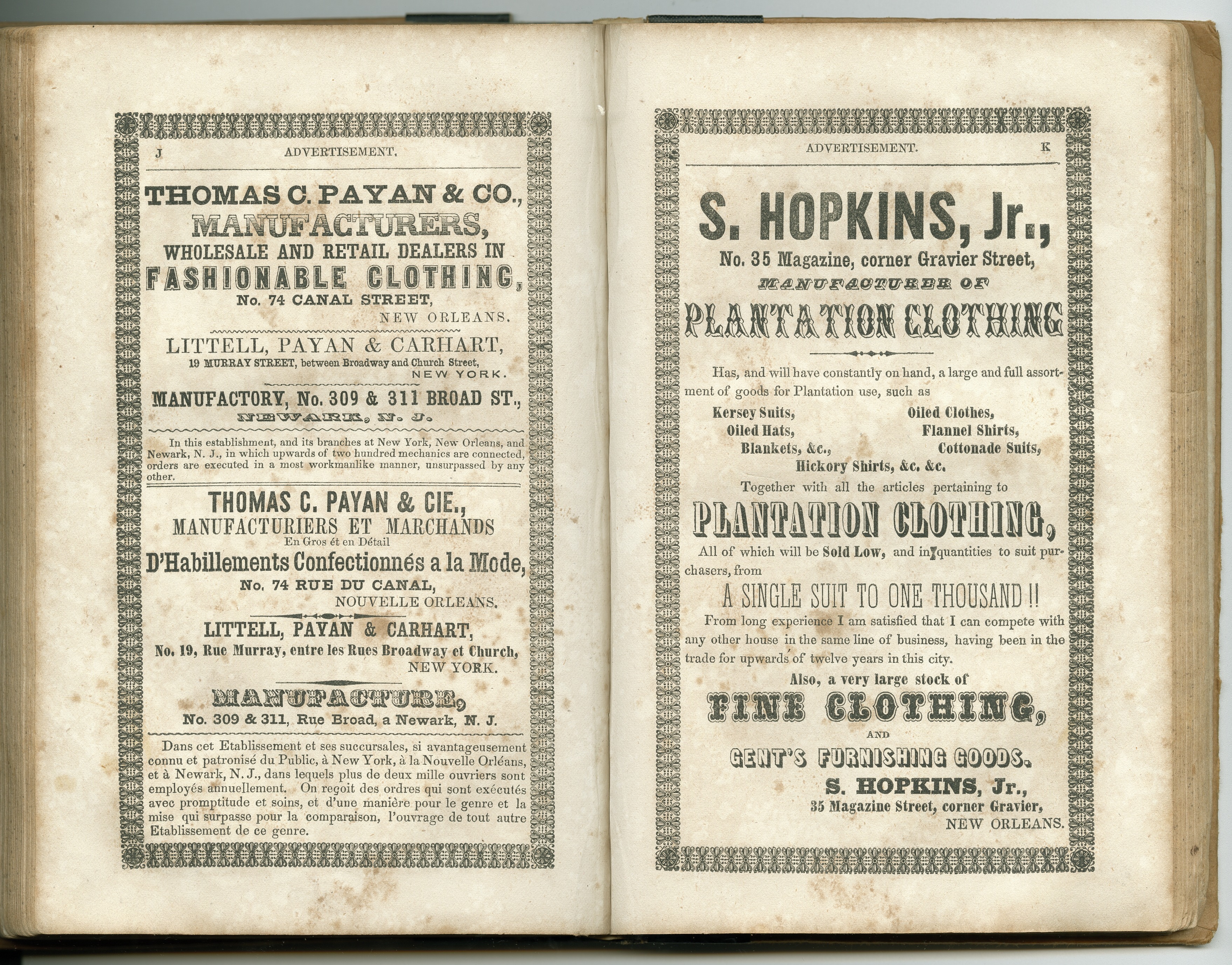
Advertisement for S. Hopkins Jr.'s plantation clothing from Cohen's New Orleans Directory for 1855
New Orleans: Office of the Picayune, 1855
THNOC, 59-4-L.2
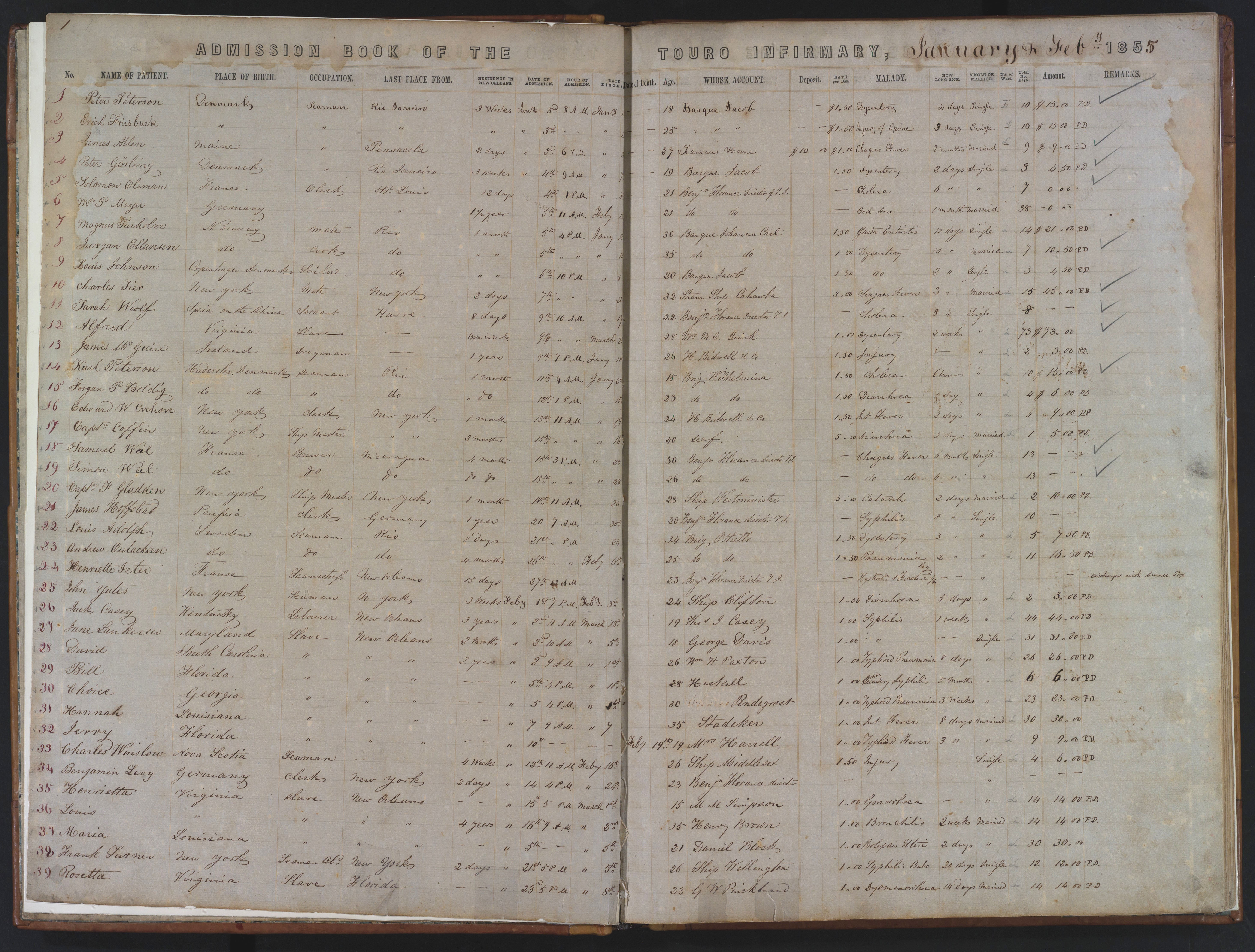
Touro Infirmary admission book
from 1855 to 1860
courtesy of Touro Infirmary Archives, New Orleans
You can see more pages of the admission book by clicking here.
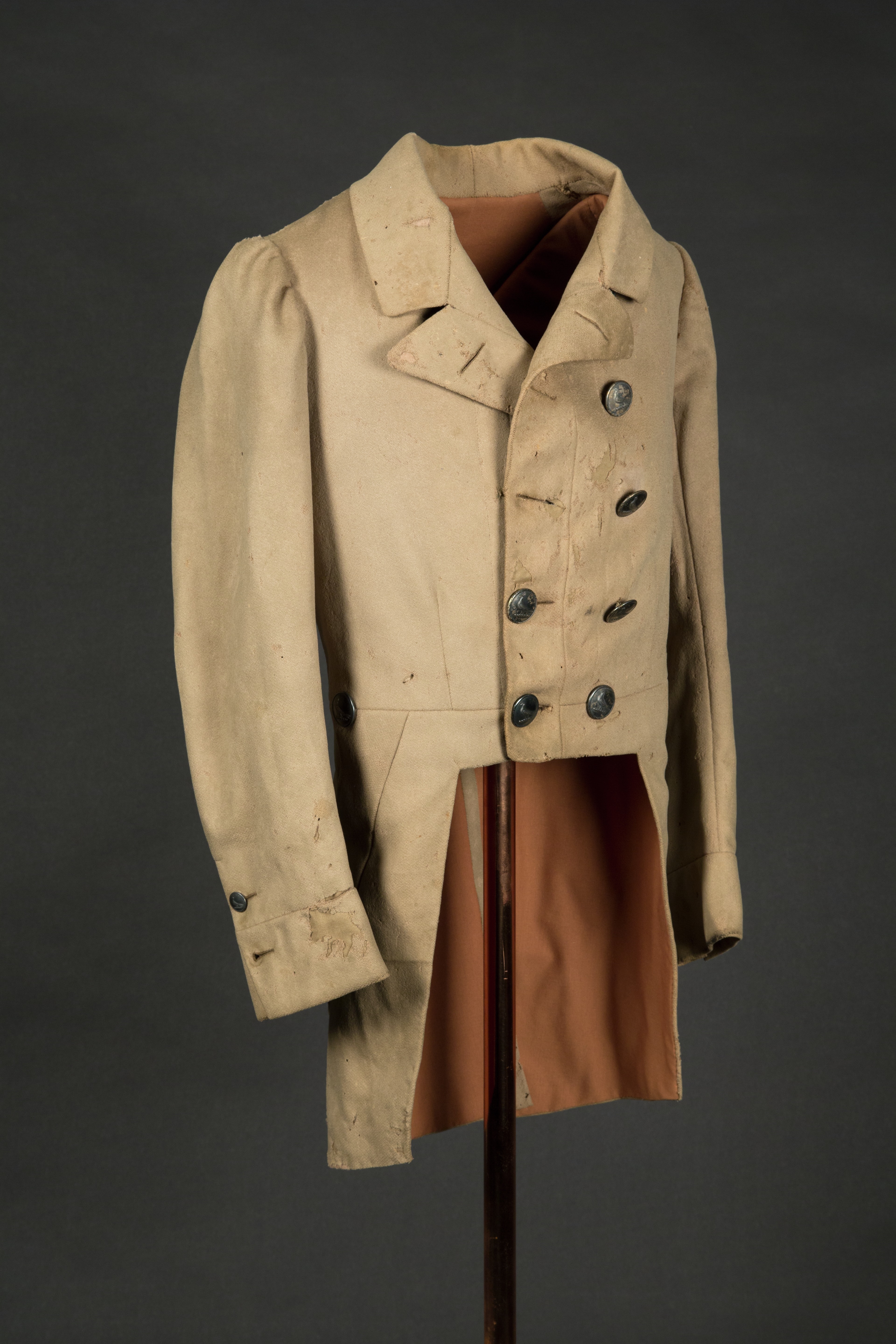
Livery coat from the household of Dr. William Newton Mercer (conserved in 2015)
between 1857 and 1865; wool with silver and pewter buttons and silk, wool, cotton, and linen lining
by Brooks Brothers, manufacturer
THNOC, 2013.0115.1

